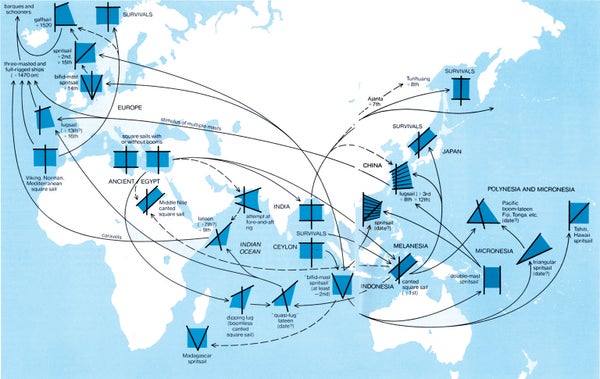1972
Molten Moonglow
“Thermocouples placed in two holes drilled on the surface of the moon by the astronauts of Apollo 15 show that heat is flowing outward at about three times the rate that had been expected. The source of the heat is presumed to be the decay of radioactive elements and confirms the high level of radioactivity previously measured in samples of lunar soil. The puzzling aspect of the measurements is that if the entire moon were as radioactive as the surface soil, the entire body, in the words of one investigator, ‘would be just a molten puddle.’”
On supporting science journalism
If you're enjoying this article, consider supporting our award-winning journalism by subscribing. By purchasing a subscription you are helping to ensure the future of impactful stories about the discoveries and ideas shaping our world today.
Car Radar Navigation
“A motorist groping through a heavy fog may well wonder if radar would help. Although it is unlikely that radar for private automobiles will be available in the near future, many of the technical problems have been solved in an ingenious system developed by Mullard Research Laboratories for airport vehicles. The image presented by the system is a direct representation of the scene ahead of the driver, projected on a television picture tube in the cab of the vehicle.”
1922
Postwar Garbage Crisis
“The present-day system of garbage reduction is founded on the thought that some of the contents are valuable. Destroy this value, and the whole system falls. That is what has happened. The principal material salvageable from garbage is grease. Prior to the war this grease found a ready market among soap and candle makers. But since the signing of the armistice this country has been flooded with millions of pounds of oils from [Asia], and tallow from South America, produced so cheaply that competition is impossible. All of the privately owned garbage reduction plants which have not already shut down will soon have to do so, and the municipal plants must follow.”
Abundance of Asbestos
“A recent discovery was made of asbestos-bearing rock being of considerable value. The deposit is located in the serpentine rocks of the Canadian Pacific Railway north of Arrowhead. The Montreal Daily Star recently announced that a large manufacturing plant for making asbestos products is about to be constructed in Quebec. About 80 percent of the asbestos produced in Canada has heretofore been exported to the United States.”
1872
Booster Shots for Smallpox
“Of all the fearful diseases that scourge the human race, [smallpox] is justly feared most. The disfigurating scars it leaves, upon many of those who escape death, are a lifelong sequel to a disgusting and painful sickness. Statistics show that about one half of those who have had the vaccine disease as a result of vaccination are liable to a form of smallpox called varioloid, approaching more or less in violence to malignant types of the disease. To insure safety, it is necessary that revaccination be practiced. There is no fact better established in medical science than that persistent revaccination will practically exterminate smallpox. Had we a law compelling vaccination and revaccination, we should soon cease to hear of the ravages of a scourge so dreadful. As it is, it is quite doubtful such a law could be enforced if enacted.”
Press Temples, Pull Teeth
“Dr. A. C. Castle (Dental Cosmos) observes that he has for thirty years benumbed the temporal nerves, for painless extraction of teeth from their sockets, never having used chloroform, ether or nitrous oxide gas. One of two modes may be adopted. By application of ice to the temples, which is somewhat distressing, the sensation of cold striking deeply. The other is done by an assistant, with each of his middle fingers pressing with persistent firmness into the hollow behind the ridge of the temporal bone, which forms the [side wall of the eye socket]. Pressure for one minute is all that is necessary. The practice leaves no unpleasant sensation to annoy the patient. It is an instinctive method often adopted by people themselves, who press their temples with their fingers to relieve themselves temporarily of headache.”
